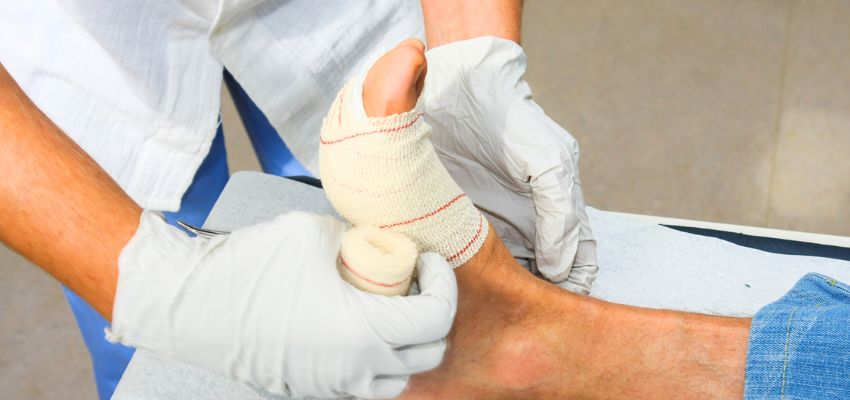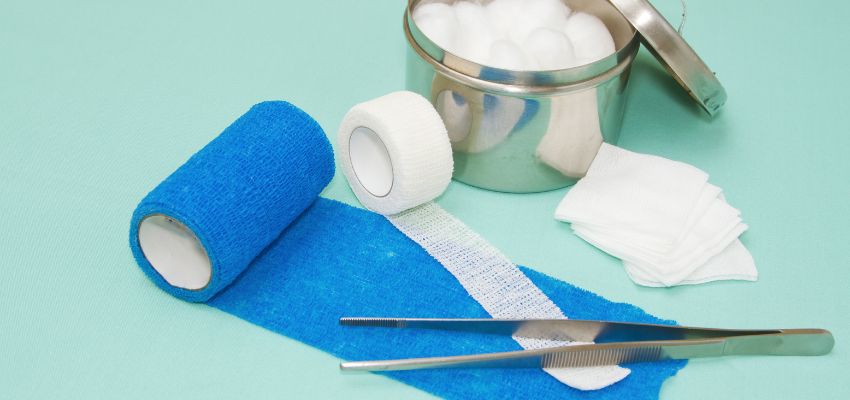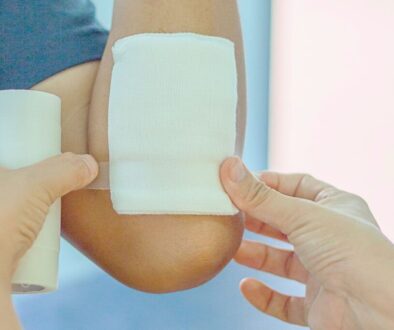How Chronic Wound Infection Affects Healing – Must Read!
Did you know a chronic wound infection can disrupt healing and harm your health? Chronic wounds cause pain and limit mobility. When infection occurs, the risks increase significantly. Infections slow healing and may lead to tissue damage. In severe cases, they can cause life-threatening complications like sepsis.
In this article, we’ll explore how chronic wound infections affect the healing process. We’ll also identify the signs to watch for and the innovative treatment strategies to improve outcomes.
What Is A Chronic Wound?
A chronic wound is any type of break in the skin or tissue that doesn’t heal within four weeks. It does not follow the normal healing process. Unlike acute wounds, chronic wounds stay open and unhealed. This is often due to underlying medical conditions or complications.
Key contributing factors include:
- Diabetes, leading to the formation of diabetic ulcers
- Circulatory disorders, such as venous or arterial ulcers
- Pressure injuries, especially in patients with limited mobility
- Autoimmune diseases, which impair the skin’s ability to heal
These wounds pose serious risks to physical health. They also impact emotional well-being. Overall quality of life can suffer as a result.
Common Types Of Chronic Wounds
Chronic wounds are categorized based on their underlying causes, including:
- Arterial ulcers, resulting from restricted blood flow
- Venous leg ulcers are caused by poor venous function and circulation
- Diabetic ulcers, often occurring on the feet due to uncontrolled blood sugar levels
- Pressure ulcers (bedsores), which develop from prolonged pressure on specific areas of the body
Identifying the type of wound is essential for determining the most effective treatment approach.
Why Do Chronic Wounds Become Infected?
Chronic wounds are particularly vulnerable to infection due to several key factors:
- A compromised skin barrier, which reduces natural protection
- Poor blood circulation limits the delivery of oxygen and nutrients essential for healing
- Excessive moisture creates an environment ideal for microbial growth
When microorganisms enter a wound, they can hinder healing. This may cause inflammation and other issues. If left untreated, it may result in serious complications. Prompt intervention is essential to minimize these risks and support proper recovery.

How Chronic Wound Infections Impede Healing
Chronic wound infections slow healing. They promote biofilm formation and prolonged inflammation. Tissue regeneration is also impaired. Understanding these effects is crucial for developing effective treatments.
How Biofilms Contribute To Delayed Wound Healing
A key reason for delayed wound healing is the formation of biofilms. These are clusters of microorganisms that stick to the wound surface. They encase themselves in a protective matrix, making them hard to eliminate. This shield resists antibiotics and the body’s immune system.
- Treatment resistance: Once a biofilm forms, infections become significantly more challenging to treat.
- Disruption of healing: Biofilms release enzymes. These enzymes break down healthy tissues. This slows down the healing process.
Chronic Infections, Inflammation, And The Immune Response
Persistent wound infections lead to chronic inflammation, which further delays healing. When harmful bacteria are detected, the immune system responds aggressively:
- Prolonged inflammation: Neutrophils and macrophages gather at the site. This leads to prolonged inflammation. It can harm healthy tissue.
- Cytokine overload: High cytokine levels increase swelling. They also stop the wound from closing correctly.
Impaired Tissue Regeneration And Repair
A balanced wound environment is essential for proper tissue regeneration. Chronic infections disrupt this balance, creating conditions that impede healing.
- Enzyme overactivity: Proteases break down the extracellular matrix. This structure is essential for cell growth.
- Oxygen deprivation: Low oxygen levels in tissue slow cellular repair. This delays recovery further.
Together, these factors create a hostile environment where wounds struggle—or outright fail—to heal.
Recognizing The Signs Of Chronic Wound Infection
Early detection of infection is essential for effectively managing chronic wounds. Here’s what to look out for:
Physical Symptoms To Monitor
- Increased pain or sensitivity around the wound
- Swelling, reddening, or a warm sensation at the site
- Presence of pus or an unpleasant odor from the wound
- Signs of blackened or dead tissue near or within the wound
When To Seek Medical Attention
If you experience symptoms like fever, chills, escalating pain, or rapid swelling, it may indicate a systemic infection. These signs require immediate medical intervention to prevent further complications.

Effective Strategies For Wound Management And Treatment
Wound care is vital for healing and preventing infections. It also helps improve recovery outcomes. New treatments and technologies give healthcare providers better tools to aid recovery.
Here’s a look at key strategies and innovations:
Wound Cleaning And Debridement
Regular cleaning and debridement are key to controlling infections. Debridement removes dead or damaged tissue. This clears barriers to recovery and reduces bacterial growth. It also helps healthy tissue form and supports healing.
Antibiotics And Antimicrobials
Topical or systemic antibiotics are often needed based on infection severity. However, antibiotic resistance is a growing concern. This has led to a focus on advanced antimicrobial therapies. Innovative dressings and alternative treatments are now key. They help fight infections while reducing antibiotic use.
Cutting-Edge Wound Care Technologies
DonorCure’s amniotic membrane allografts are transforming chronic wound care. These FDA-approved solutions speed up healing and reduce inflammation. They promote tissue regeneration and protect against infections.
Successful wound treatment is more than surface care. Long-term healing requires treating root causes. Issues like uncontrolled diabetes, poor circulation, or autoimmune disorders must be addressed. Managing these conditions is key to lasting recovery.
Preventing Chronic Wound Infections
Prevention is always better than a cure and can significantly lower the risk of complications.
Effective Wound Care At Home
- Regularly clean wounds following your healthcare provider’s instructions.
- Use prescribed dressings to maintain an optimal moisture balance, keeping the wound moist but not overly wet.
The Impact Of Nutrition And Lifestyle
- Support tissue repair with a balanced diet rich in protein, vitamins, and minerals.
- Individuals diagnosed with diabetes should keep their blood sugar levels stable. This is essential for proper healing.
Importance Of Monitoring And Follow-Up
Routine check-ups help detect issues early. They also allow for quick management of complications. This is crucial for high-risk individuals like diabetics or those with limited mobility.
Frequently Asked Questions
How can I tell if my wound is infected?
Watch for key signs like redness, swelling, pus, or unusual odors. If the symptoms get worse or you develop a fever, seek medical attention immediately.
Can chronic wound infections cause serious complications?
Absolutely. Untreated infections can get worse. They may lead to severe conditions like cellulitis, osteomyelitis, or sepsis. In severe cases, surgery or amputation might be needed.
How long does it take for an infected chronic wound to heal?
Healing times vary based on the wound’s severity and the treatment used. Advanced solutions can dramatically speed up the recovery process.
What is the most effective treatment for chronic wound infections?
The best results come from combining antimicrobial therapies. It’s essential to address any underlying health conditions as well. This comprehensive approach ensures optimal healing outcomes.

Reclaim Healing And Hope: Managing Chronic Wound Infections With Confidence
Chronic wound infections are a serious challenge. They need careful management and timely treatment. Innovative solutions can make a difference. By using advanced medical technology and prioritizing prevention, individuals can improve their quality of life. This helps reduce the impact of chronic wounds.
Ready to take the next step toward better healing? Explore innovative wound care solutions from DonorCure. Your recovery starts here.
Heal Ulcers, Burns, & Surgery Wounds With Break-Through Amniotic Allograft Treatments
Experience the future of wound care with our advanced amniotic allograft treatments. Say goodbye to slow healing. Our innovative solutions promote faster recovery from pressure wounds, ulcers, burns, and surgical wounds. Trust the power of science for your healing journey. Regain your comfort and health today! See if you are eligible for treatment here.

About The Author
Corinne Grace is a full-time writer living in the Philippines. She has a nursing degree from Riverside College. Her background in nursing informs her perspective, allowing her to weave in themes of health, empathy, and resilience into her work.




